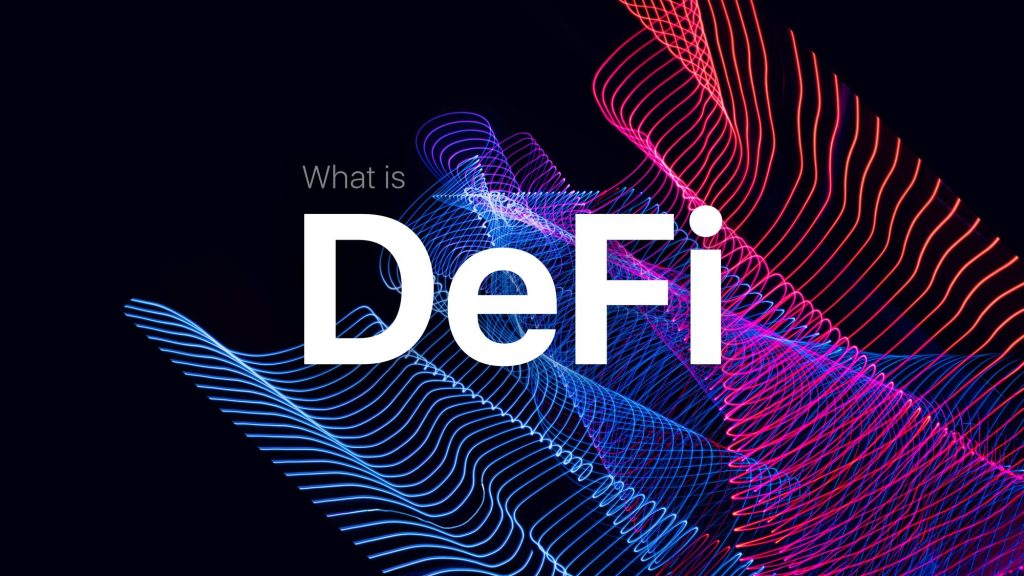Introduction
Decentralized Finance (DeFi) has emerged as one of the most exciting and transformative innovations within the blockchain space. As an alternative to traditional, centralized financial systems, DeFi aims to create a more inclusive, transparent, and efficient financial ecosystem by leveraging blockchain technology, particularly smart contracts and cryptocurrencies. Through decentralized platforms, users can access a variety of financial services, including lending, borrowing, trading, and insurance, without relying on banks, brokers, or other intermediaries.
As DeFi continues to gain momentum, many have begun to ask: Will DeFi disrupt and possibly replace the traditional financial system? The potential for disruption is clear, but there are also significant hurdles and challenges to overcome. This article delves into the impact of DeFi on traditional finance, its potential to disrupt the existing financial system, and the key factors that will determine whether or not DeFi will completely transform the financial landscape.
1. Understanding DeFi: A Quick Overview
1.1 What is DeFi?
Decentralized Finance (DeFi) refers to a set of financial services and products built on blockchain technology, primarily using Ethereum and other smart contract platforms. These platforms eliminate the need for traditional intermediaries, such as banks, insurers, and brokers, by allowing peer-to-peer transactions through smart contracts—self-executing agreements that automatically execute when predefined conditions are met.
DeFi encompasses various applications, including:
- Lending and Borrowing: Platforms that allow users to lend or borrow assets directly from others without banks or other financial institutions.
- Decentralized Exchanges (DEXs): Platforms for trading cryptocurrencies without a central authority.
- Stablecoins: Cryptocurrencies pegged to a stable asset, like the US dollar, to reduce volatility.
- Insurance: DeFi protocols that offer decentralized insurance solutions without the need for intermediaries.
- Yield Farming: A process of earning returns on cryptocurrency holdings by providing liquidity to decentralized platforms.
1.2 The Core Benefits of DeFi
- Accessibility: DeFi platforms are open to anyone with an internet connection, allowing individuals in underbanked or unbanked regions to access financial services.
- Transparency: All transactions are recorded on a public blockchain, ensuring that users can easily verify and track the flow of funds.
- Security and Control: Users retain control of their funds and assets, reducing the risk of theft or mismanagement by intermediaries.
- Cost Efficiency: By cutting out middlemen, DeFi protocols often offer lower transaction fees compared to traditional financial systems.
2. Key Factors in the DeFi Revolution
2.1 Disintermediation: Removing the Middleman
At the heart of DeFi’s appeal is its ability to eliminate traditional intermediaries, such as banks, brokers, and payment processors. This disintermediation offers a host of advantages:
- Lower Costs: By removing the middleman, DeFi can reduce transaction fees, service charges, and interest rates that are typically associated with traditional financial systems.
- Faster Transactions: Traditional financial systems often involve delays due to multiple layers of authorization and third-party processing. With DeFi, transactions can be executed almost instantaneously via smart contracts.
- Global Reach: DeFi platforms are accessible to anyone with an internet connection, providing financial services to individuals who may not have access to traditional banking infrastructure.
For example, Compound, a leading DeFi platform, allows users to lend their cryptocurrencies to others and earn interest, all without needing a bank to facilitate the transaction. This model offers a more efficient and cost-effective solution compared to traditional lending systems.
2.2 Financial Inclusion: Providing Access to the Unbanked
One of the most significant promises of DeFi is its potential to increase financial inclusion. In many developing countries, access to banking services is limited or non-existent. DeFi platforms, being decentralized and accessible via the internet, could provide individuals with access to a variety of financial services, including savings accounts, loans, and insurance, without needing to rely on traditional banks.
According to the World Bank, about 1.7 billion adults worldwide remain unbanked. DeFi has the potential to drastically reduce this number by offering low-cost, borderless financial services to individuals who have previously been excluded from the traditional financial system.
3. DeFi’s Impact on Traditional Finance
3.1 The Role of Banks and Financial Institutions
Traditional financial institutions, including banks, credit unions, and investment firms, have been the primary providers of financial services for centuries. The introduction of DeFi threatens to undermine the core functions of these institutions by providing alternative, more efficient ways of delivering financial services.
- Lending and Borrowing: DeFi lending platforms like Aave and Compound allow individuals to borrow and lend without going through a bank. In contrast, banks charge fees for these services and often have strict eligibility criteria.
- Payments and Transfers: Platforms like MakerDAO and Uniswap allow for cross-border payments and exchanges without the need for intermediaries like money transfer services or banks, potentially reducing costs and transaction times.
- Insurance: DeFi insurance platforms, such as Nexus Mutual, enable individuals to pool funds and cover risks without relying on large insurance companies.
Traditional financial institutions may see DeFi as a competitive threat, especially as DeFi protocols offer users greater flexibility, control, and lower fees. However, many banks are also exploring blockchain-based innovations like central bank digital currencies (CBDCs) and partnerships with DeFi protocols to integrate blockchain technology into their existing systems.
3.2 Regulatory Challenges
While DeFi offers many advantages, its rapid growth and lack of regulatory oversight present significant challenges for governments and regulators. Traditional finance is heavily regulated to ensure financial stability, protect consumers, and prevent fraud. DeFi, however, operates in a largely unregulated environment, which can pose risks related to fraud, money laundering, tax evasion, and market manipulation.
Governments and regulators are increasingly concerned about the potential for DeFi to circumvent existing laws and financial regulations. In the next few years, we may see governments attempt to regulate DeFi through new legislation or by integrating DeFi with traditional financial oversight structures. The development of regulatory frameworks for DeFi will be critical in determining how it coexists with traditional finance and whether it can scale in a secure and sustainable way.
3.3 Smart Contracts and Legal Frameworks
Smart contracts are one of the key components of DeFi. These are self-executing contracts with the terms of the agreement written directly into code. While smart contracts are tamper-proof and automated, they present challenges in terms of legal recognition. In traditional finance, contracts are enforceable by law, and disputes are settled in courts. However, smart contracts are not yet universally recognized in the legal system, which may complicate their use in high-stakes financial transactions.
As DeFi grows, there will likely be efforts to integrate smart contracts with existing legal systems. This could involve creating legal frameworks that govern smart contract execution or establishing decentralized arbitration mechanisms to resolve disputes.

4. Will DeFi Fully Replace Traditional Finance?
4.1 The Benefits of DeFi: A Revolution in Finance
DeFi is undeniably revolutionary in its potential to offer greater transparency, lower costs, financial inclusivity, and faster transactions. By decentralizing control, DeFi eliminates many inefficiencies inherent in traditional systems, such as long approval processes and high fees. It also provides opportunities for individuals in underbanked regions to access financial services that would otherwise be unavailable to them.
However, while DeFi has made significant strides in disrupting traditional finance, it is unlikely to completely replace the traditional financial system in the next five years. There are several reasons for this:
- Scalability Issues: Current DeFi platforms, particularly those built on Ethereum, face challenges in handling large-scale transactions due to high gas fees and network congestion. For DeFi to replace traditional finance, it must scale efficiently and affordably, which will require advances in blockchain infrastructure.
- Regulatory Uncertainty: The lack of regulatory clarity surrounding DeFi poses a significant risk to its widespread adoption. Governments and regulators are still grappling with how to govern decentralized platforms, and many DeFi projects may face legal challenges or regulatory crackdowns in the future.
- User Experience and Adoption: While DeFi is growing rapidly, it remains complex and difficult for mainstream users to adopt. The user interfaces for many DeFi platforms are still in their infancy, and the security risks (such as smart contract vulnerabilities) may deter average users from fully embracing these platforms.
4.2 Collaboration Between DeFi and Traditional Finance
Rather than completely replacing traditional financial systems, DeFi and traditional finance may evolve in tandem. Many financial institutions are already exploring ways to integrate blockchain technology into their existing operations, such as offering cryptocurrency trading, utilizing smart contracts, and partnering with DeFi platforms. Hybrid financial models could emerge, where blockchain and decentralized platforms augment and complement traditional finance.
For example, banks could offer DeFi-like services, such as yield farming or decentralized lending, to their customers while still maintaining compliance with existing regulations. Similarly, regulators could work with DeFi platforms to ensure that these services meet legal standards for consumer protection, anti-money laundering (AML), and know-your-customer (KYC) requirements.
5. Conclusion
While DeFi is undoubtedly a disruptive force in the financial world, it is unlikely to completely replace the traditional financial system in the short term. Instead, we are more likely to see a convergence of DeFi and traditional finance, where the two ecosystems coexist and collaborate. DeFi offers a more efficient, transparent, and inclusive alternative to certain aspects of traditional finance, but challenges related to scalability, regulation, and user adoption remain significant barriers to its widespread dominance.
In the next five years, DeFi will continue to push the boundaries of what is possible in finance. It will drive innovation, enhance financial inclusion, and offer new opportunities for users worldwide. However, the complete disruption of the traditional financial system is unlikely without significant advancements in regulation, security, and scalability. The future of finance will likely be a hybrid system, where decentralized platforms complement and coexist with traditional institutions.
















































